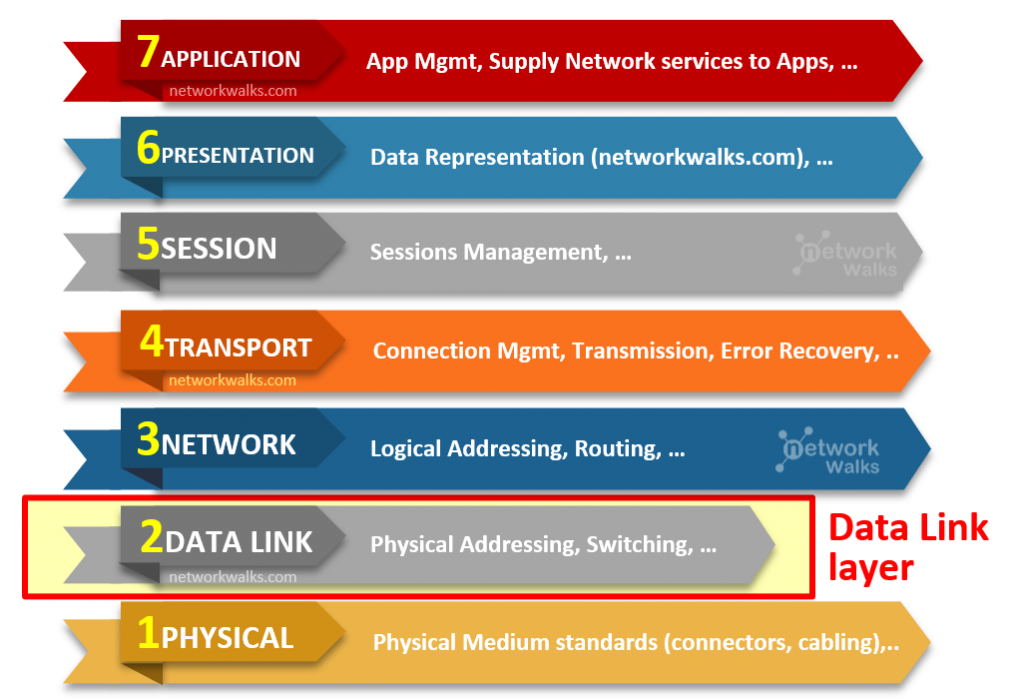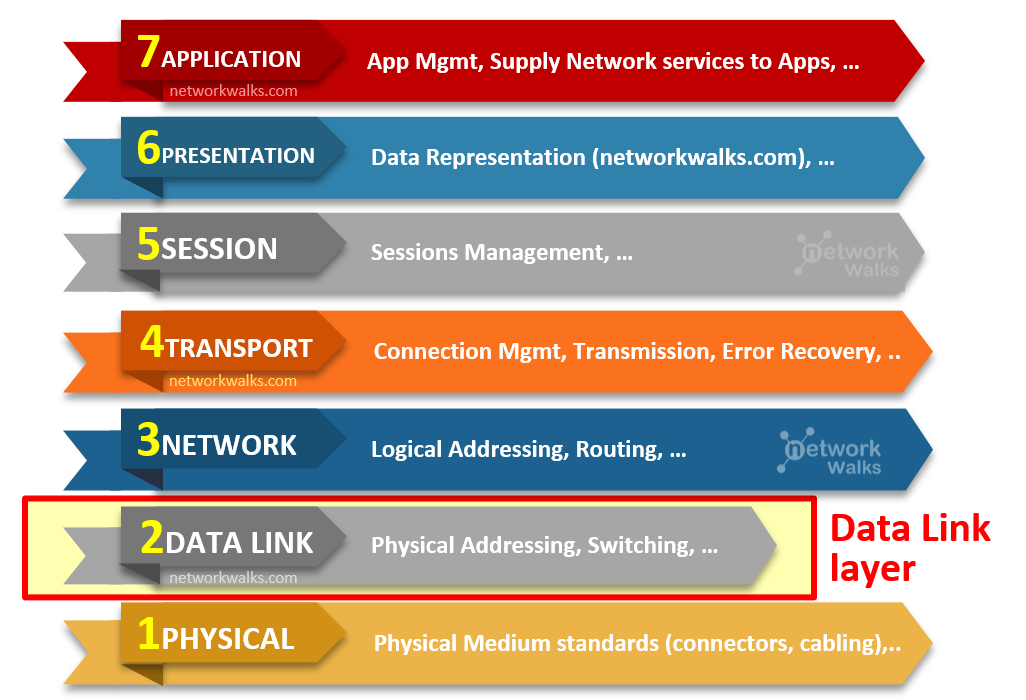 Data Link Layer of OSI Model is the second layer in seven layer model. Data Link layer performs two very important functions of physical addressing and switching. Data link layer is the place where most LAN, Ethernet and wireless LAN technologies are defined. Each layer in OSI Model has its own duties & specific functions to perform so that it can support the layers above it.
Data Link Layer of OSI Model is the second layer in seven layer model. Data Link layer performs two very important functions of physical addressing and switching. Data link layer is the place where most LAN, Ethernet and wireless LAN technologies are defined. Each layer in OSI Model has its own duties & specific functions to perform so that it can support the layers above it.
Note: Most of the students & network engineers confuse Layer2 & Layer3. There is a basic difference between Network Layer & Data Link Layer. Network Layer is concerned with data transfer from one computer to another computer even if it is on a remote network, while the data link layer only deals with devices that are local to each other & are within one network. PDU at Data Link Layer is called Packet. OSI Model divides the network communication processes into seven layers in order to simplify it.
 Data link layer controls the Layer-2 Network boundary. It provides functional and procedural methods of transferring data between two points. It works like traffic control system which works without concern to their ultimate destination. When devices attempt to use a medium simultaneously, frame collisions occur. Protocols like Data link specify how devices detect and recover from such collisions and may provide mechanisms to reduce or prevent them.
PDU at Data Link Layer is called Frame.
Data link layer controls the Layer-2 Network boundary. It provides functional and procedural methods of transferring data between two points. It works like traffic control system which works without concern to their ultimate destination. When devices attempt to use a medium simultaneously, frame collisions occur. Protocols like Data link specify how devices detect and recover from such collisions and may provide mechanisms to reduce or prevent them.
PDU at Data Link Layer is called Frame.
Sub-Layers of Data Link Layer
Data Link Layer has two further Sublayers which perform different functions. These layers are:i. LLC (Logical Link Control) Sub-Layer
This LLC sublayer is primarily concerned with multiplexing protocols to be sent over Media Access Control (MAC) sublayer. The LLC does this by splitting up the data to be sent into smaller frames and adding descriptive information to these frames, called headers.ii. MAC (Media Access Control) Sub-Layer
Media Access Control Layer controls how a computer on the network gains access to the data … and permission to transmit it. The MAC sublayer is also responsible for the actual access to the network cable, or communication medium.Data Link Layer Protocols
The OSI Model provides a conceptual framework for communication between computers, but the model itself is not a method of communication. Actual communication is made possible by using communication protocols. Each layer on the OSI Model has some protocols associated with it. Some important protocols on Data Link layer are listed in below:- Ethernet
- HDLC
- ARP
- PPP
- Frame Relay
- VLAN
- STP
- L2 QoS
- LLDP
- CDP (Cisco Discovery Protocol), L2TP, NDP, VTP, MAC
Network Equipment/Components at Data Link Layer
Similar to protocols, each layer has associated equipment with it. Some important Equipment that operate at Data Link Layer of OSI Model are listed in below:- L2 Switches
- Bridges
- Wireless Access Points
- Modems
- NIC’s installed in a host
Summary
Data Link Layer is the 2nd Layer in OSI seven Layer Model. It performs very important functions like L2 Switching, Logical Link Control, Media Access Control, Physical Addressing, Encapsulation & Error Control. Important Protocols at Data Link Layer include Ethernet, HDLC, ARP, PPP, Frame Relay, VLAN, STP, L2 QoS, LLDP, CDP, L2TP, NDP, VTP & MAC. Equipment operating at Data Link Layer include L2 Switches, Bridges, Access Points, Modems & Network Interface Cards.
Now, test your knowledge on OSI Model using our free Quizzes & Cheat sheet resources for long term memory:
Networkwalks Summary Cheatsheets
Free Online Quizzes (Best for Cisco CCNA, Huawei HCNA, N+)Follow our Facebook Page & YouTube Channel for more updated Cheatsheets & Quizzes:
